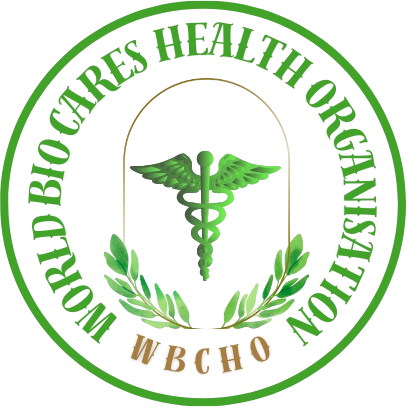LUNGS DISEASE
Overview:
Lung disease refers to any condition or disorder that affects the lungs, making it harder for the body to breathe and receive the oxygen it needs. These diseases can range from mild and temporary conditions to serious, chronic illnesses. Lung diseases can affect various parts of the respiratory system, including the airways, lungs, or blood vessels, and can be caused by factors such as infections, smoking, environmental pollutants, genetic factors, and chronic illnesses.
Some of the most common types of lung diseases include:
1. Chronic Obstructive Pulmonary Disease (COPD): A progressive lung disease often caused by long-term smoking or exposure to air pollutants. It includes chronic bronchitis and emphysema and leads to difficulty breathing, coughing, and mucus production.
2. Asthma: A chronic inflammatory condition that causes the airways to become narrow and swollen, leading to breathing difficulties, wheezing, shortness of breath, and coughing, often triggered by allergens or irritants.
3. Pneumonia: An infection that inflames the air sacs in one or both lungs, which may fill with fluid or pus. It is usually caused by bacterial, viral, or fungal infections and leads to symptoms such as cough, fever, and difficulty breathing.
4. Pulmonary Fibrosis: A condition where the lung tissue becomes scarred and thickened, making it harder to breathe. This condition can be caused by long-term exposure to toxins, certain medications, and autoimmune diseases.
5. Lung Cancer: A type of cancer that originates in the lungs, often due to smoking or exposure to harmful chemicals or toxins. It can cause symptoms like coughing, chest pain, and difficulty breathing.
6. Tuberculosis (TB): A bacterial infection that primarily affects the lungs but can spread to other parts of the body. TB can cause coughing, weight loss, and chest pain.
7. Pulmonary Hypertension: A condition where the blood pressure in the lungs' arteries becomes abnormally high, leading to heart strain and symptoms like shortness of breath, dizziness, and fatigue.
8. Sleep Apnea: A disorder in which breathing repeatedly stops and starts during sleep. It can lead to poor oxygen supply and is often linked to other health issues like heart disease and high blood pressure.
Lung diseases can range from temporary conditions, like a cold or mild pneumonia, to chronic and potentially life-threatening illnesses. Prevention and treatment depend on the specific condition but often involve lifestyle changes, medications, physical therapy, or surgery. Early diagnosis and management are key to improving quality of life and reducing complications.
SYMPTOMS
The symptoms of lung diseases can vary depending on the specific condition, but many share common signs related to difficulty breathing and reduced lung function. Common symptoms of lung diseases include:
1. Shortness of Breath (Dyspnea): Difficulty breathing or feeling out of breath, especially during physical activity or even at rest in severe cases.
2. Persistent Cough: A chronic or ongoing cough that lasts for weeks or months. It may be dry or produce mucus, depending on the condition.
3. Wheezing: A high-pitched whistling sound while breathing, often caused by narrowed or inflamed airways.
4. Chest Pain or Tightness: Discomfort or a feeling of pressure in the chest, which may occur with deep breaths or coughing.
5. Excess Mucus Production: Coughing up thick mucus or sputum, which may be clear, yellow, green, or even bloody, depending on the cause.
6. Fatigue: Feeling unusually tired or weak, often due to reduced oxygen levels in the blood or the body’s effort to compensate for breathing difficulties.
7. Frequent Respiratory Infections: Repeated infections such as bronchitis or pneumonia, which can indicate an underlying lung disease.
8. Cyanosis: A bluish tint to the lips, face, or extremities, which indicates low oxygen levels in the blood.
9. Rapid Breathing (Tachypnea): An increased rate of breathing, often as a result of oxygen deficiency in the blood.
10. Swelling in the Legs or Ankles: Fluid retention in the legs or ankles may occur in some lung diseases, especially those that affect the heart (like pulmonary hypertension).
11. Loss of Appetite or Weight Loss: People with lung diseases, particularly chronic ones, may experience a reduced appetite or unexplained weight loss.
12. Difficulty Sleeping: Conditions like sleep apnea or severe asthma may make it hard to sleep due to trouble breathing during the night.
These symptoms can vary in severity and duration depending on the specific lung condition. If you experience persistent or worsening symptoms, it’s essential to seek medical attention for proper diagnosis and treatment.
CAUSES
The causes of lung diseases can vary widely depending on the type of condition. Generally, lung diseases are caused by a combination of environmental, genetic, and lifestyle factors. Below are some common causes of various lung diseases:
1. Smoking:
- Smoking is the leading cause of Chronic Obstructive Pulmonary Disease (COPD), emphysema, chronic bronchitis, and lung cancer. The toxins in cigarette smoke damage the airways and lung tissue, causing inflammation and scarring, leading to breathing difficulties and other complications.
2. Environmental Factors:
- Air Pollution: Exposure to pollutants such as vehicle emissions, industrial fumes, and chemicals can irritate the lungs and increase the risk of diseases like asthma, bronchitis, and lung cancer.
- Occupational Hazards: Jobs involving exposure to asbestos, dust, fumes, or chemicals (e.g., construction work, mining, factory work) can increase the risk of diseases like asbestosis, pneumoconiosis, and lung cancer.
- Secondhand Smoke: Breathing in smoke from others’ cigarettes can also lead to lung diseases, particularly in non-smokers.
3. Infections:
- Bacterial or Viral Infections: Conditions like pneumonia, tuberculosis (TB), and bronchitis are often caused by bacterial, viral, or fungal infections that affect the lungs. Tuberculosis is a bacterial infection that primarily affects the lungs but can spread to other organs.
4. Genetic Factors:
- Some lung diseases have genetic components, such as cystic fibrosis, which is a hereditary disorder that affects the lungs and digestive system, leading to chronic lung infections and breathing difficulties.
-Alpha-1 antitrypsin deficiency, a genetic condition, can also lead to emphysema and COPD due to a lack of a protective enzyme in the lungs.
5. Allergies and Asthma Triggers:
-Asthma is often triggered by allergens such as pollen, mold, dust mites, pet dander, or smoke. When exposed to these irritants, the airways become inflamed and constricted, causing difficulty breathing.
-Allergic reactions can cause inflammation in the airways, which may worsen existing lung conditions like asthma.
6. Autoimmune Diseases:
- Certain autoimmune diseases, like rheumatoid arthritis or lupus, can cause inflammation in the lungs, leading to conditions such as pulmonary fibrosis or interstitial lung disease.
7. Obesity:
- Being overweight can put pressure on the diaphragm, making it more difficult to breathe. This can lead to conditions like sleep apnea and increase the risk of developing pulmonary hypertension.
8. Aging:
- As people age, the lung tissue can become less elastic and the airways may become stiffer, which can lead to a decreased ability to breathe efficiently. This natural aging process can increase the risk of chronic respiratory conditions.
9. Lack of Physical Activity:
-Sedentary lifestyles can worsen lung conditions like COPD or asthma. Lack of exercise may also contribute to poor lung capacity and reduced overall lung health.
10. Exposure to Toxins and Chemicals:
Radon exposure: Long-term exposure to radon, a naturally occurring radioactive gas, can increase the risk of lung cancer.
-Chemicals and Toxins: Certain chemicals used in industrial settings, such as asbestos, can cause lung diseases like mesothelioma and asbestosis.
11. Hormonal Changes:
In gestational lung diseases or pregnancy-related complications, hormonal changes can contribute to respiratory difficulties and other lung conditions.
12. Inherited Disorders:
- Conditions like primary ciliary dyskinesia or cystic fibrosis are genetic disorders that cause the lungs to produce thick mucus, leading to chronic infections, inflammation, and damage to the lungs over time.
Understanding the causes of lung disease is essential for prevention and early diagnosis. Preventative measures like quitting smoking, avoiding exposure to harmful pollutants, and maintaining a healthy lifestyle can reduce the risk of developing many lung conditions.


